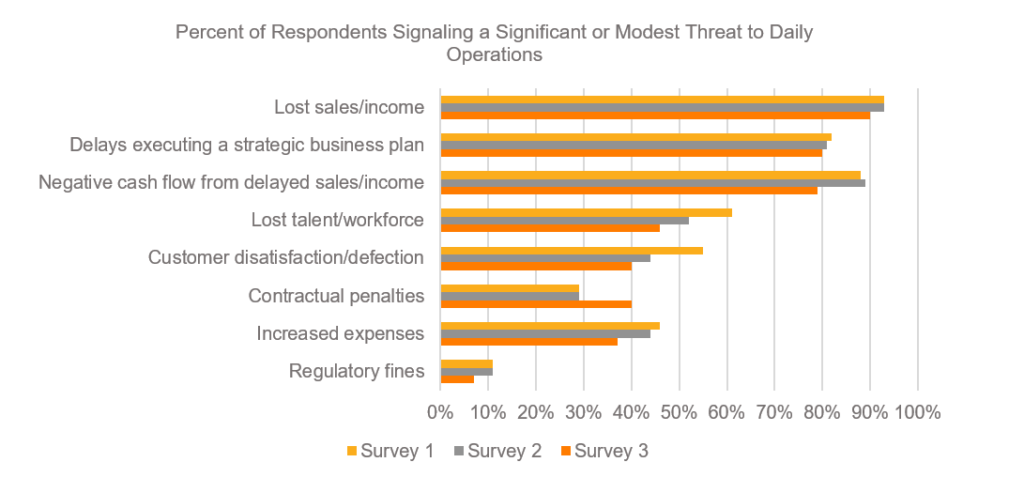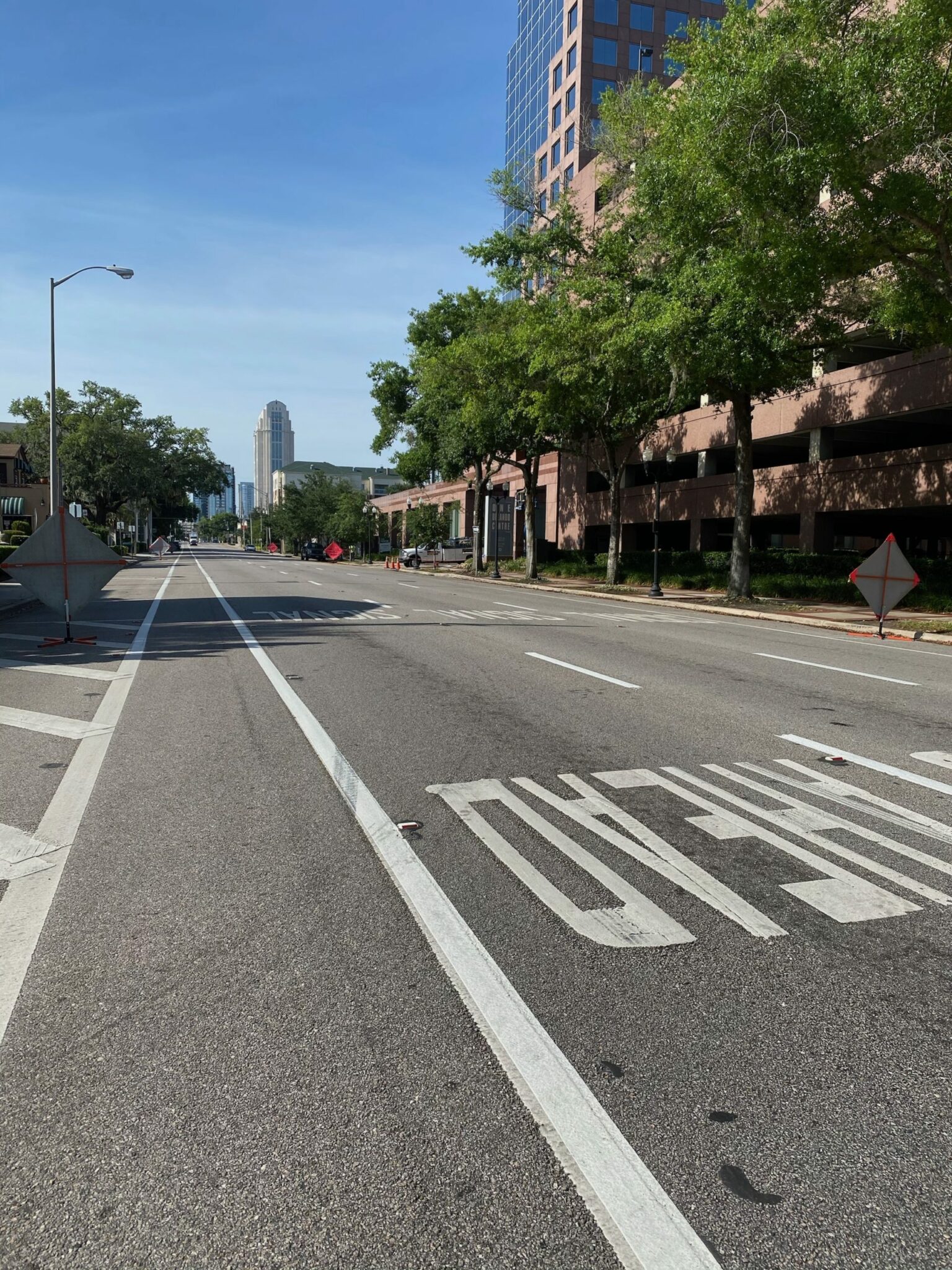This final survey in the series revealed emerging threats to operations, strategies businesses will likely take for the remainder of 2020 and captured data on which businesses have received federal aid.
The Partnership’s third Business Impact Survey closed for responses on Wednesday, May 6 after a week of collecting data directly from the Orlando regional business community. Since mid-March, the Partnership opened three separate business surveys to track the ongoing impacts of this crisis, accumulating 724 responses in all. This final survey in the series revealed emerging threats to operations, strategies businesses will likely take for the remainder of 2020 and captured data on which businesses have received federal aid.
Threats
Contractual penalties revealed themselves as an emerging threat to business operations, seeing an increase from 29 to 40 percent (11 percentage points) for the number of respondents who selected that this was either a significant or modest threat to continuing daily operations.

The top two threats continue to be lost sales (90 percent) and delays executing a strategic business plan (80 percent). Anxieties surrounding the threat of lost talent and customer defection have waned consistently from survey to survey, dropping from 55 to 40 percent for the former and 61 to 46 percent for the latter from survey one to survey three. The time series results can be viewed in the chart above.
When asked what expenses were critical to maintain operations, the number one response continued to be payroll. Payroll increased from 57 to 61 percent as the most important expense to keep businesses open. Rent decreased in importance from 13 to five percent.
Throughout all three surveys, businesses have been consistently impacted by lost sales and a lack of cash inflow, citing the unstable or risky business environment as one signal of hard times. Put together, this perception of risk and delay in executing strategic plans will create ripple effects throughout the economy. The impacts from COVID-19 shutdowns will last longer than just the immediate reopening timeline.
Strategies for 2020
In response to the above threats and to adapt to a new normal, local businesses highlighted many different strategies likely to be in place for the remainder of the year, with some impacting employees and others impacting customers. In a new question on survey three, respondents were asked which strategies they were likely to employ for the remainder of 2020 as businesses reopen. Ranking strategies anywhere from extremely unlikely to extremely likely, more than 85 percent noted new cleaning protocols were either likely or extremely likely and 82 percent said new seating arrangements would more than likely be in place for the remainder of 2020.
Approximately 69 percent of respondents said they would be implementing long-term remote work policies. However, this did not translate into plans to reduce physical office space, with only 29 percent of respondents saying this was likely or extremely likely. Lastly, 56 percent of respondents said they would be implementing electronic systems to reduce face-to-face interactions between employees and customers, signaling the acceleration of automation trends the COVID-19 pandemic is expected to create.
Which Businesses Have Applied for Aid
The third survey asked a new question, aimed at comparing how many businesses had received aid with those who had applied. Approximately 15 percent of respondents indicated that they had applied for aid or relief but had not received any assistance to date. Almost half (46 percent) of respondents indicated that they had not applied for any assistance programs, a 10-point jump from the previous survey.
When asked why they had not applied for aid, of a sample size of 140 businesses, 40 percent indicated that characteristics of their business made it ineligible and 39 percent indicated that they did not need assistance. A small percentage indicated they could not get in touch with a lender or did not know who to contact.
If your business has not applied for any loan or assistance programs, please give an indication as to why.
- Characteristics (e.g. size, type) of my business make it ineligible: 40%
- My business does not need assistance at this time: 54%
- I am not sure who to contact for assistance: 5%
- I do not have an existing account with lenders: 5%
- Lenders will not call me back: 2%
- Other, please specify: 12%
Results may not sum to 100. Respondents could comment in the “Other” response even if they had selected another option.
Focusing on small businesses surveyed (2-99 employees), 31 percent had not applied for any type of assistance, half (50 percent) had received payments through the Paycheck Protection Program (PPP) and 19 percent had applied for relief but had not received it yet. Compared to larger businesses, small businesses had very similar, low, counts for respondents who could not get in touch with a lender or who did not know who to contact.
The full results of the third impact survey and previous two are available in the Research Center of the Partnership’s COVID-19 resource center. Users can interact with the data to identify results based on company size, location, demographics of ownership, and more. A new series of surveys, measuring the longer-term impacts of a COVID-19 induced recession, are likely to be scheduled later this summer.




